Joseph Heard
British, (1799-1859)West Indiaman off Eddystone Lighthouse
Oil on canvas, signed
Provenance: The Parker Gallery, 2 Albemarle Street, London.
A superb seascape painting of a West Indiaman trading barque sailing past the Eddystone Lighthouse off Plymouth. The ship is depicted sailing in choppy seas with only its main sails and top sails set, indicating strong winds. A figurehead can be seen at the bow of the ship which appears similar to that of Britannia, possibly a reference to its name. The lighthouse in the painting is Smeaton’s lighthouse, the third one to be built on the Eddystone Rocks and which was completed in 1759. The structure is how the artist would have known it at the time, before the exterior was painted with broad red and white horizontal bands in 1858. Although Smeaton’s lighthouse was eventually replaced by a Douglass's lighthouse in 1882, the upper part the tower was dismantled and rebuilt on its replica base on Plymouth Hoe where it still stands today.
Joseph Heard was a ship portraitist born on 7 March, 1799 in Egremont near Whitehaven, Cumberland to Joseph and Ann Heard. His father was a sadler working out of 28 Church Street in Whitehaven where the family also lived. His brother Isaac Heard (1804-1869) also became an artist. Although little is known about his early life, both brothers would have undoubtedly received an artistic education. Some sources state he was tutored by the portrait painter John Clementson (1735-1805), however, given his dates and the fact that Clementson spent most of his life in London, this seems unlikely. It is more probable that he was influenced by the marine artist Robert Salmon (c1775-1845) who also lived in Whitehaven.
He began working as an artist in Whitehaven but moved to Liverpool in 1831, where he joined his local masonic lodge. He married Alice Wilson a widow on 15 December, 1832 at St Philip’s Church and together the couple lived in Norfolk Street. By 1840, they had moved to 109 Pitt Street where he shared a studio with his brother. In Liverpool he found a ready market amongst the ship owners of the busy trading port and enjoyed considerable success during his lifetime. His ship portraits were highly detailed many depicted notable or dramatic events in a ship’s career.
Towards the end of his life he moved to 90 Pitt Street where he later died on 10 November, 1859. He was buried on 14 November, 1859 at St James Cemetery. Examples of his work are located in a number of public collections including the Beacon Museum, Helena Thompson Museum, Merseyside Maritime Museum, National Maritime Museum, National Trust, North Devon Maritime Museum, University of Liverpool, Victoria Gallery and the Walker Art Gallery.
© Benton Fine Art
| Presentation | The painting is housed in a new, English made gilt frame which is in excellent condition. The reverse retains a label for The Parker Gallery, a firm of picture and print dealers founded in 1750. During the late 1920’s they were based at 28 Berkeley Square, London but by 1937 had moved to 2 Albemarle Street. From the early 80’s they were based were once again in Berkeley Street. |
| Condition | As with all of our original antique oil paintings, this work is offered in ready to hang gallery condition, having been professionally cleaned, restored and revarnished. |
Dimensions
| Image Size | 28.25 inches x 40.25 inches (72cm x 102.5cm) |
| Framed Size | 34 inches x 46 inches (86.5cm x 117cm) |
You May Also Like












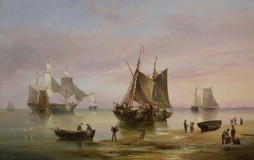
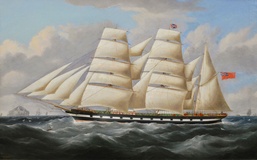
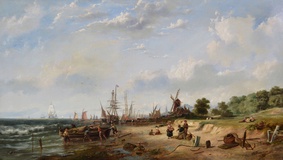
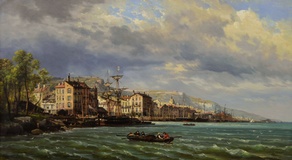
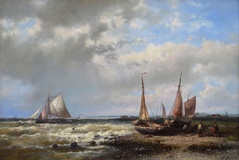
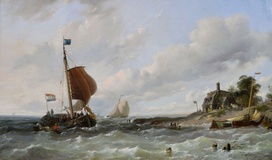
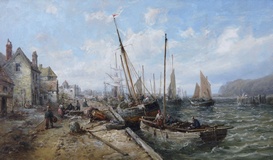
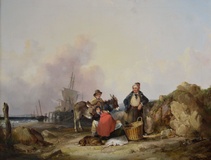
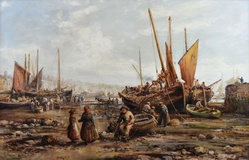

 West Indiaman off Eddystone Lighthouse - Joseph Heard
West Indiaman off Eddystone Lighthouse - Joseph Heard

